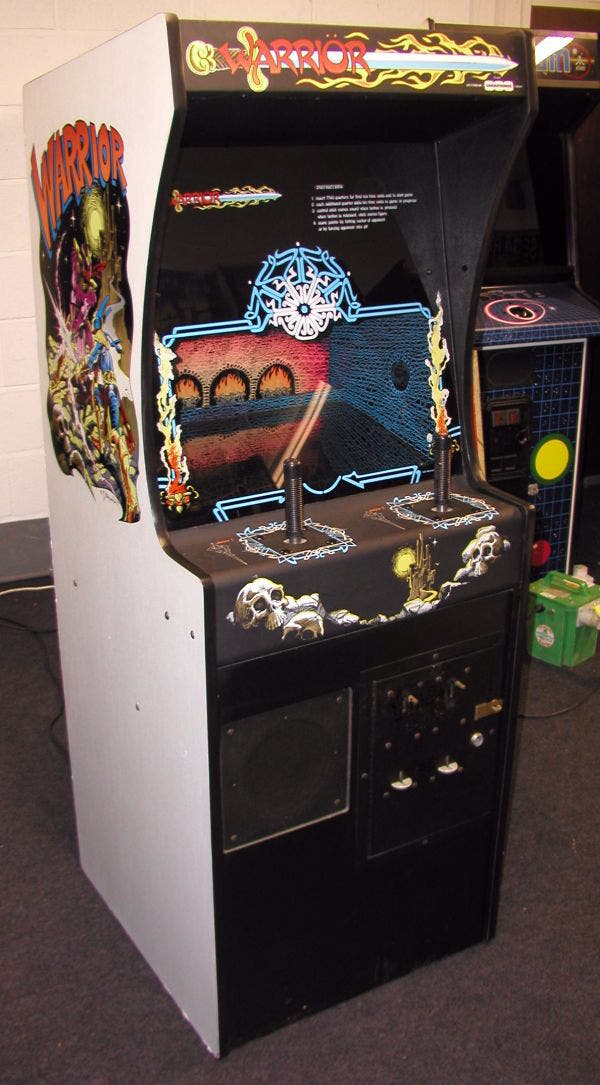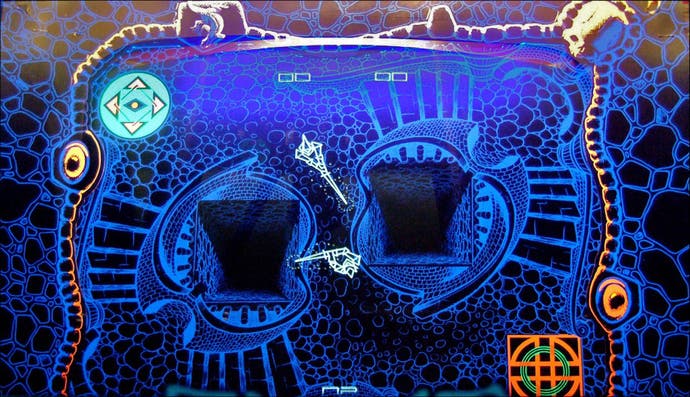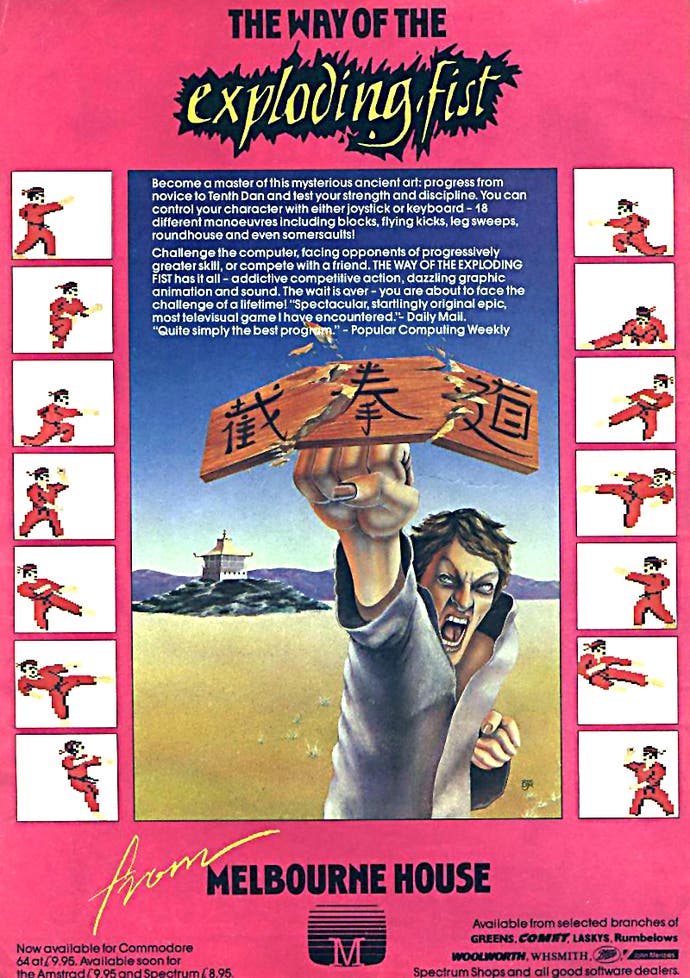The Tao of Beat-'em-ups
Part 1: The evolution of a genre, 1976 to 1985.
""I don't fear a man who's practiced 10,000 kicks once. I fear the man who's practiced one kick 10,000 times." - Bruce Lee
"Although the beat-'em-up genre has never needed separating into a great many sub-categories (how many different ways do we need to visually describe kicking someone in the throat?), there's one significant division that helps to establish a fighting game's style. The established definitions prefer to classify brawlers as "beat-'em-ups" or "fighting games", although this leaves an undesirable amount of ambiguity surrounding the actual mode of play.
The "fighting game" is a vague generalisation usually employed for the one-on-one tournament match seen in Street Fighter, while the "beat-'em-up" often goes to signify the scrolling, multiple adversary style of Final Fight's gameplay.
By chance, this division also works to demonstrate the early evolution of fighting games which began that fateful year in the 1980s with a few iconic tournament fighters. Most notable (and well known at the time) was undoubtedly Karate Champ, from fledgling arcade developer Technos.

Released in 1984, the colourful and highly accessible coin-op karate simulator rocked the arcades graphically, imaginatively and literally. The dual joystick control system gave players the handles they needed to really throw a six-foot tall cabinet around the arcade floor while living out their new desires to mimic Daniel-san's cinematic, karate-kicking antics. The brilliant control system, wonderfully responsive gameplay and encyclopaedic list of martial arts moves set an immediate and lofty benchmark for the tournament games that would follow, and still holds its own in the one-on-one arena to this day.
Meanwhile (in the Bat Cave), two other game systems were also discovering the possibilities of martial sparring action - the ZX Spectrum and Commodore 64. 1984 heralded the arrival of two other tournament fighters on the home computers. Kung Fu for the ZX Spectrum came from Yugoslavian developers Damir Muraja and Dusko Dimitrijevic, featuring two impressively sized line-drawn combatants in a colourful dojo; trading a remarkable number of slightly stilted blows.
The C64's Black Belt more closely mirrored Karate Champ's Japanese martial arts, though the differences in play, appearance and the actual development times suggest there was little in the way of inspiration provided by the coin-op. This was evidently another early exploration of a new gameplay style, and while not massively responsive or playable, it achieved a superb rendition of two karate-ka facing off at a martial arts tournament - and that's all the industry needed to see.
These early pioneers launched an entire, highly prolific gaming genre in less than a year, and by 1985 the arcades were alive with the sounds of kung fu fighting.
"To know oneself is to study oneself in action with another person." - Bruce Lee

The scrolling beat-'em-up saw a considerably more organic evolution, rather than the overnight appearance of the tournament fighter. Indeed, it's only in scholastic retrospect that it's possible to decipher quite which games provided the raw ingredients for the sub-genre. Platform games and shooters were in abundance and, desperate to fathom new and imaginative ways to present these increasingly tired concepts to the jaded gamer, considerable liberties were taken that closed the gulf between shooting and punching.
1982 and 1983 both saw the industry unconsciously lean toward on-screen combat, with games like Swashbuckler for the Apple II featuring close-quarters swordplay (which was mimicked on DOS by the superior Bushido game) and a tedious Chuck Norris license called Superkicks for the Atari VCS, C64, ColecoVision and Vic20. But none of these games quite captured the essence of a genuine martial encounter or glorified street brawl; none waded into the murky waters of the feral psychology that celebrates the savage nature of humanity.
As if 1984 hadn't done enough to propel ass-kicking games into the melting pot of arcade exploration, another title appeared that laid the foundations for the scrolling beat-'em-up - the esoterically named Kung Fu Master from Nihon Bussan. Once again, this early experiment in videogame violence wasn't massively enjoyable, but its clever basis in Hong Kong cinema (taking particular inspiration from Game Of Death) not only endeared it to the kung fu loving gamer, but presented this new concept of multiple adversaries and scrolling action in an immediately recognisable style.

It was also re-released that same year to help promote a new Jackie Chan film in Japan, called Spartan X (better known as Wheels On Meals over here) despite clearly being inspired by Game Of Death and having sod all to do with the Spanish-based events seen in the Golden Harvest movie. But what this immediate rebranding demonstrated was the enormous potential that the whole entertainment industry (and not just the games one) saw in the interactive action of a beat-'em-up.
Around the same time, Brøderbund Software combined the freedom of movement seen in Kung Fu Master with the extended fight sequences of Karate Champ tournaments with its 8-bit title, Karateka. Initially released in '84 onto the Atari 8-bit and Apple II computers (with a NES version for console gamers quickly following), Karateka successfully experimented with adding plot to the ass-kicking action. Far superior to the hurried Kung Fu Master conversions, Karateka eventually saw a steady trickle of ports to most major systems of the 1980s, and can reasonably claim to be one of the first successful attempts at a scrolling beat-'em-up on the home machines.
Ultimately, however, the demands on a home game system to represent not just two fighters against a stationary backdrop, but a multi-screen level with lots of assailants was still prohibitively difficult and developers focused their attention on expanding the horizons of the one-on-one fighter.







